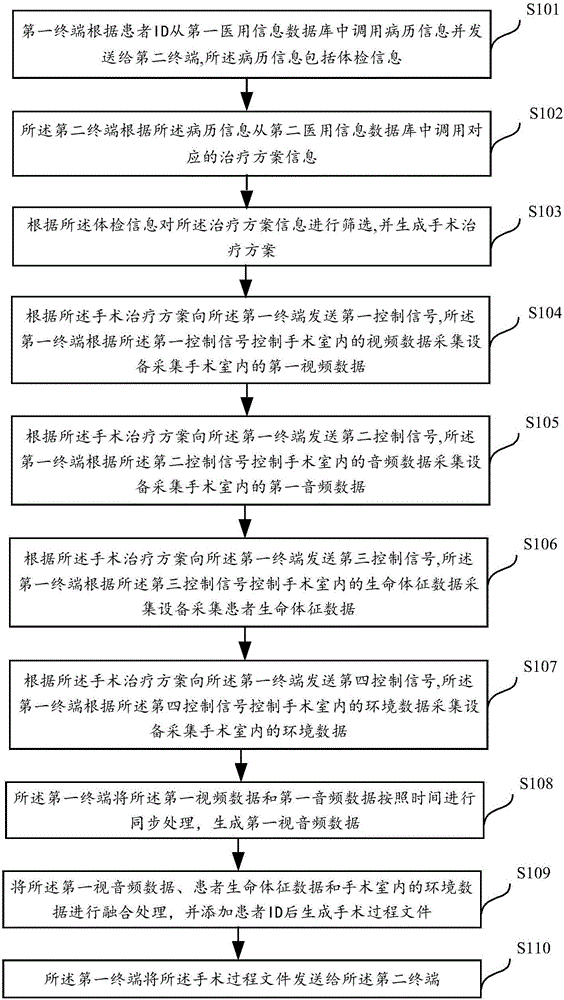Remote visualization data interaction method
A data interaction and video data technology, applied in the field of data processing, can solve the problems of single function, affect the effect of remote consultation, and cannot realize remote control, and achieve the effect of improving the effect and flexible data acquisition.
- Summary
- Abstract
- Description
- Claims
- Application Information
AI Technical Summary
Problems solved by technology
Method used
Image
Examples
Embodiment Construction
[0032] The technical solutions of the present invention will be described in further detail below with reference to the accompanying drawings and embodiments.
[0033] The described embodiments are only some, not all, embodiments of the present invention. Based on the embodiments of the present invention, all other embodiments obtained by persons of ordinary skill in the art without making creative efforts belong to the protection scope of the present invention.
[0034] The first terminal, the second terminal, and the third terminal in the present invention may be terminal devices with processing capabilities such as desktop computers, notebook computers, tablet computers, and smart phones, and also include self-defined devices with processing modules.
[0035] figure 1 The flow chart of the remote visualization data interaction method provided by the embodiment of the present invention, such as figure 1 As shown, the remote visualization data interaction method of the embo...
PUM
 Login to View More
Login to View More Abstract
Description
Claims
Application Information
 Login to View More
Login to View More - R&D
- Intellectual Property
- Life Sciences
- Materials
- Tech Scout
- Unparalleled Data Quality
- Higher Quality Content
- 60% Fewer Hallucinations
Browse by: Latest US Patents, China's latest patents, Technical Efficacy Thesaurus, Application Domain, Technology Topic, Popular Technical Reports.
© 2025 PatSnap. All rights reserved.Legal|Privacy policy|Modern Slavery Act Transparency Statement|Sitemap|About US| Contact US: help@patsnap.com

